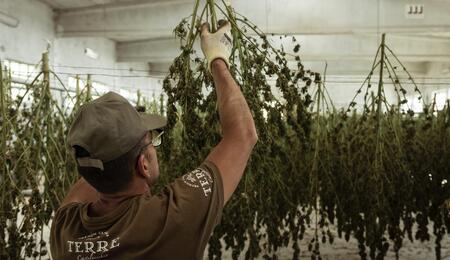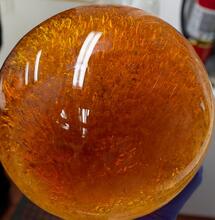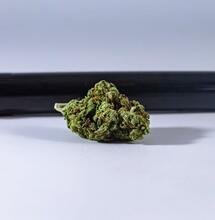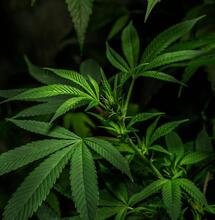What to Do with Cannabis Harvest "Waste" Material?

It’s funny that what might some people consider trash, it’s gold for others. All the byproducts left after the completed harvest can be processed, enjoyed, and even sold (with some marketing skills). There isn’t great science behind sorting the byproducts, you just need to have a good eye for sorting the material. And yes, absolutely, you can do this while you are high too.
You can evaluate all cannabis plant material during the trimming.
Same as the main flower material, the quality of the remaining material is based on the percentage of THC and other cannabinoids it contains. After buds are removed, growers or users can identify three types of remains: popcorn buds (larf), sugar trim, and fan leaves.
On the other hand, stems and woody parts of the plant would not do much, since they contain few cannabinoids. However, they can be great prank material for your annoying boss!
The Byproduct Nomenclature or Grades of Trim
Popcorn Buds (Larf)
These are the poor, vampire buds, growing very tiny since they aren’t exposed to sunlight. Larf buds are time-consuming and cosmetically undesirable in the market. But what makes them great is the high percentage of THC, so they are often used to make pre-rolls or concentrates.
Sugar Trim
The exotic name of this byproduct is connected with the resin-covered leaves that grow near and often surround the buds. Very rich in THC, sugar trim is cut during manicuring and often used to make extracts such as kief, hash, tinctures, and edibles.
Fan Leaves (Sun Leaves)
The fan leaves (or sun leaves) are not as rich in cannabinoids as the sugar trim but they still have something to offer. For example, leaves with visible glands are a keeper, but you can definitely skip the ones from the immature plants that do not yield much THC. Fan-leaf glands are quite small and lurk on the surface of the leaf, while glands near the flowers are stalked and appear as funny bulbous caps. Compared to smaller glands, glands near the flowers contain considerably more cannabinoids.
What about male plants?
Marijuana is all about female plants but male plants aren’t totally worthless since they contain some quantity of cannabinoids, especially at the budding, pre-flowering stage. The small leaves near the flowers (also called sugar leaves) are the most potent ones, more so than the younger and then the older fan leaves. Sadly, male plants are not prized for resin production and are often removed from the garden and destroyed.
How Are Marijuana Byproducts Used?
After classifying the “waste” it’s time to have a look at how to use the separated trim and maximize crop value. This is the part where byproducts items such as trim, sugar leaves, and popcorn buds can be converted to kief, hash, tinctures, juices, and whatnot.
Kief
Kief is the tiny, sticky crystals that cover cannabis flowers. It's the dry sift or pollen and it's precious. Kief refers to the resin glands which contain the terpenes and cannabinoids of cannabis plants. While kief still contains cannabinoids, the resin glands that develop on flower buds pack the biggest punch. Lower-quality green kief contains a lot of vegetation and is usually reserved for cooking or for further processing. The blond glands, which is the really good stuff are delicious when smoked fresh and loose. This kief tastes and smells differently than the rest of the bud. It's higher on terpenes and it's lighter.
The traditional marijuana user will insist that kief is best pressed into hash. You can also sprinkle it over a bowl or joint or even add it in your food. So, screen the plants for sugar leaves and popcorn buds and get to the kief.
If you haven't worked with kief for a while now and look for ideas on what to do with it, or you are trying this for the first time, below are some ideas.
“Crowning a ball”
Nothing fancy, this is just sprinkling the kief onto the packed bowl of cannabis, to boost potency. To make the most of it, corner your hits by burning a quadrant of the bowl at a time so that you can take several hits in a row.
“Twaxing”
What's better than a good joint is two good joints. And maybe even better is the twaxed joint, which sets the pleasure to another level. Pepper the ground marijuana flower with a healthy pinch of kief and mix well to allow extra trichomes stick to the ground leaves, adding extra potency to the interior of your joint. Use your tongue to lick the joint on the outside or use your preferred wax and then put the kief on the top of the joint.
Make Hash from Kief
A tale as old as time! The kief that has been heated and pressurized to form a soft, green bail, in other words changing the composition by rupturing the resin glands you are getting the hash. The secret is only in the rupturing of the kief, which gets darker color and very fascinating taste.
Moonrocks
Moonrocks is another option to add some glam to your high life. How to prepare? You need top-quality nugs to cover in oil and roll in kief. Gently heat your oil of choice and coat your buds with it. While the buds are still warm, sprinkle the kief or dredge the buds in a kief bath using tongs. Let it harden, then enjoy the moonrocks by breaking them by hand and sprinkling them into your bowl. Avoid using the grinder for moonrocks.
Kief discs
Kief discs or kief pucks as the name indicates are small circular discs made of compressed cannabis crystals. Homemade kief discs are very easy to make if you have a kief press and just break them into small pieces for smoking. Or just go big and smoke the whole disc at once.
What Are Some of the Kief-heavy Strains?
Hash Plant, Chemdog, and White Widow are often the strains best targeted among growers who are big fans of kief.
Hash Plant
Hash Plant’s dominant flavor is the spicy-sharp bite of smoldering resin glands. In fact, the appearance of a tight, resin-drenched flower changes in a brittle surface when dried, and then it appears the profound Afghani aroma mixed with a hint of hashish. It's a promise for a blissful stone.
Chemdog
You will recognize this hybrid of Sour Diesel and OG Kush from a mile away. And it’s as powerful as it smell. Nobody can tell with certainty where this strain comes from, or how it’s made exactly and perhaps that is the reason for the (without exaggeration) magical sensation. If you want an extra-terrestrial experience go for it. Or just blame it on the kief.
White Widow
On the menu of every Dutch coffee shop since the 1990s, White Widow — an iconic cross between Brazilian Sativa landrace and a resin-heavy South Indian indica is a blessing of a strain. If you haven't heard about it, you are either a newbie or a very young person. Its buds are white with crystal resin, potent, ready to induce euphoria and energy and lead to endless conservations and creativity.
What to Do With Male Plants and Similar Material?
While it's easy to toss stuff as male plants or sun leaves into the garbage, there're several other things you can try out. You can for instance use this plant material as a juice and get a dose of some cannabis vitamins. If you prepare juice leave out the stalks as those are harder to process into a juice.
If you have tall male plants, you can use those for extracting some fiber. Of course, this would require you to have an interest or hobby working with fiber. Alternatively, you can ask out a friend who's working with fibers if they want your waste plants.
Male plants are also good to replant in sections of the garden where the soil needs some invigoration. The root of the marijuana plant is really strong and it will break through the hardest soil. Basically, you can just use it to improve the soil, then remove it and plant marijuana or other herbs that will benefit from worked soil.
Lastly, you can always put male plants to breeding use. If you have a strong, resilient male plant you can select it to pollinate with female plants.
That's plenty of uses for what some people call waste material, isn't it?







